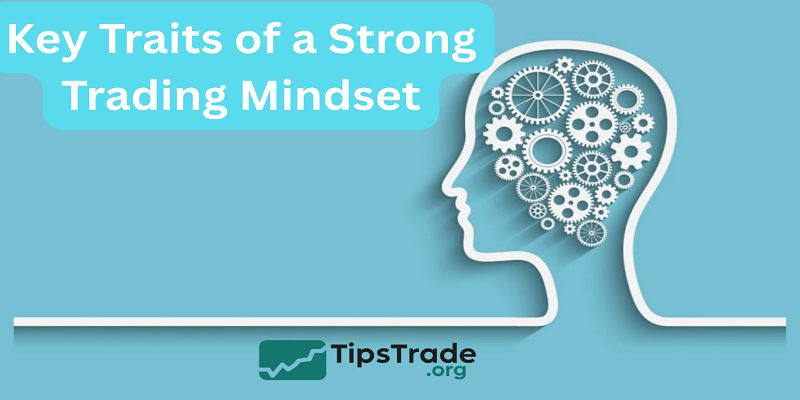Trading mindset is a fundamental element that shapes a trader’s success by influencing decision-making, emotional control, and adaptability in the markets. A strong trading mindset involves discipline, patience, resilience, and the ability to learn from mistakes, enabling traders to stay focused even during periods of losses or high volatility. Cultivating the right mindset helps prevent impulsive actions driven by fear or greed and supports consistent adherence to trading plans and risk management rules. Ultimately, mastering the trading mindset is key for sustainable profitability, long-term growth, and personal development in the challenging world of trading.
What Is a Trading Mindset & Why It Matters

Trading Mindset vs Trading Psychology
- The terms trading mindset and trading psychology are often used interchangeably, but they have subtle differences.
- Trading psychology refers to emotional states like fear, greed, or confidence.
- A trading mindset, however, is broader—it encompasses beliefs, habits, attitudes, and self-discipline.
- A healthy trading mindset means treating trading like a business rather than gambling.
- For instance, while a gambler focuses on immediate outcomes, a professional trader focuses on risk control and long-term consistency.
- According to Investopedia, psychology is responsible for nearly 80% of trading success, with strategy and tools playing only a supporting role.
- The takeaway: developing a trading mindset is not optional—it’s the foundation of a sustainable trading career.
The Role of Emotions: Fear and Greed in Trading
- Fear and greed are the two most cited emotional drivers in trading.
- Fear often prevents traders from entering valid setups, or causes premature exits.
- Greed, on the other hand, encourages overtrading, oversized positions, and ignoring stop losses.
- For example, during the 2020 COVID crash, many retail traders sold at the bottom due to fear, only to watch markets recover soon after.
- Conversely, during bull runs, greed led traders to chase parabolic moves, often entering right before reversals.
- Behavioral finance research shows that loss aversion—the tendency to feel losses twice as strongly as gains—heavily impacts decision-making.
- Recognizing these biases is the first step to controlling them.
- Successful traders develop awareness, journaling habits, and routines to counter fear and greed effectively.
Behavioral Finance and Cognitive Biases
Trading mindset is also shaped by cognitive biases. Common biases include:
- Confirmation bias: seeking only information that supports your trade idea.
- Overconfidence bias: believing your skills guarantee profits.
- Recency bias: assuming the last few trades predict the future.
- Herding behavior: copying others without analysis.
These biases skew perception and decision-making.
A 2021 study in the Journal of Behavioral Finance found that traders who actively recognized and journaled cognitive biases improved performance by 23% compared to those who ignored them.
Developing a strong trading mindset involves training yourself to notice these biases, slow down decisions, and rely on data-driven strategies rather than emotions or assumptions.
Key Traits of a Strong Trading Mindset

Discipline and Self-Control
- Discipline is the backbone of trading. It means following a plan regardless of emotions.
- A disciplined trader respects stop losses, sticks to position sizing rules, and avoids impulsive trades.
- A case study from Trading Psychology 2.0 by Brett Steenbarger highlights that traders with consistent routines outperform those who improvise.
- Self-control is not about suppressing emotions, but about acting despite them.
- For example, resisting the urge to revenge trade after a loss is a hallmark of discipline.
The more consistently you follow rules, the easier discipline becomes—it transitions from effort to habit.
Patience and Long-Term Thinking
- Many traders fail because they crave instant results. Patience, however, separates professionals from amateurs.
- Waiting for high-probability setups instead of chasing every move is critical.
- An experienced futures trader once noted, “My biggest profits didn’t come from trading more; they came from trading less, but with patience.” Long-term thinking also means accepting drawdowns and knowing consistency is built over hundreds of trades, not just one or two.
- Data from MyFxBook shows that traders with fewer but higher-quality trades have survival rates 38% higher than overactive traders. Patience is, therefore, a competitive advantage.
Resilience and Handling Drawdowns
- Drawdowns are inevitable. The key is resilience—the ability to recover emotionally and financially after losses.
- Without resilience, traders either quit prematurely or take reckless risks to “get even.”
- For example, prop firm traders who survive challenges often mention resilience as the main differentiator. They treat losses as tuition, not failure. Psychologists recommend reframing setbacks as learning opportunities. Journaling not just the trade, but also the emotions felt, builds emotional toughness over time.
Resilient traders keep perspective: one bad week does not define a career.
Adaptability and Flexibility
- Markets are dynamic. A rigid trader insists their system “must work,” while an adaptable trader adjusts when volatility, news events, or trends shift. Flexibility is a hallmark of a strong mindset.
- For instance, a swing trader who ignored macroeconomic shifts in 2022 inflationary cycles likely struggled.
- An adaptable trader, however, adjusted stop-loss levels, reduced position sizes, or temporarily switched to intraday trading.
- Adaptability doesn’t mean constantly changing strategies—it means adjusting risk and tactics without abandoning core principles.
Confidence Without Overconfidence
- Confidence allows traders to pull the trigger when opportunity arises. Overconfidence, however, leads to oversized bets and rule-breaking.
- The difference lies in humility: confident traders know they can be wrong and plan accordingly.
- A 2019 CFA Institute paper revealed that traders who ranked themselves “above average” tended to over-leverage and experience larger drawdowns.
- Balanced confidence combines preparation, backtesting, and risk management.
True trading confidence is quiet, disciplined, and process-driven—not loud or reckless.
Self-Reflection and Continuous Improvement
- Successful traders constantly evaluate themselves. Self-reflection involves reviewing not just trades, but also emotional responses, decision-making speed, and adherence to the plan.
- Tools like trade journals, performance dashboards, or even voice notes help capture insights.
- Over time, patterns emerge: maybe fear causes early exits, or greed triggers oversized positions. By identifying these patterns, traders can improve incrementally.
- Continuous improvement aligns with the concept of a “growth mindset,” where mistakes are feedback rather than failure.
How to Develop a Growth Mindset as a Trader

From Fixed to Growth Mindset
- Psychologist Carol Dweck’s research defines the difference between fixed and growth mindsets.
- Fixed-mindset traders believe skills are innate: “I’m either good or bad at trading.” Growth-mindset traders believe skills can be developed through effort, learning, and adaptation.
- Traders with growth mindsets embrace losses as lessons, not final verdicts. They focus on process, not just profit.
- For example, a losing trade becomes an opportunity to refine risk rules rather than evidence of incompetence.
Over time, this mindset shift builds resilience, adaptability, and consistency.
Journaling and Post-Mortem Analysis
- Journaling is one of the most practical tools to build a growth mindset.
- By documenting not just entry/exit points but also emotional states, traders uncover recurring patterns.
A study in Trading Behavior Quarterly (2022) showed that traders who journal daily improved performance consistency by 29%.
Post-mortem analysis—asking “what went wrong or right?” after each trade—turns experiences into actionable lessons.
Over time, this habit reframes mistakes from negative outcomes into stepping stones toward mastery.
Mentorship, Community, and Feedback Loops
- Learning in isolation is slow. Traders who engage with mentors, trading groups, or communities accelerate growth.
- Feedback provides perspective, helps spot blind spots, and reinforces accountability.
- For instance, many prop firms now offer coaching as part of funded programs because mentorship improves trader retention.
- Traders who share journals in communities report higher consistency than solo traders.
Simulation, Demo Trading, and Incremental Challenges
- Before risking capital, building mindset through simulation or demo accounts is invaluable.
- Demo trading helps practice discipline without financial pressure.
- Once consistency is proven, incremental challenges—like trading micro-lots—build confidence progressively.
- This approach mirrors sports training: athletes practice drills before competing. Similarly, traders must strengthen their mindset muscle before scaling risk.
Mindfulness, Meditation, and Stress Management
- Mindset development also requires emotional regulation.
- Practices like mindfulness, meditation, or breathing exercises reduce stress, enhance focus, and prevent impulsive trading.
- Research published in the Journal of Cognitive Enhancement (2021) found that traders practicing mindfulness meditation had 24% fewer emotional trading mistakes. Even short daily routines—such as five minutes of deep breathing before trading—improve clarity and calm.
- Stress management outside markets—exercise, sleep, balanced lifestyle—also strengthens resilience inside markets.
Practical Strategies to Strengthen Your Trading Mindset

- Create pre-trade checklists (confirm entry criteria, risk per trade, emotional state).
- Define risk tolerance clearly—never risk more than 1–2% per trade.
- Use daily routines and rituals: same analysis time, same journaling habits.
- Break big goals (e.g., “become profitable”) into micro goals (“stick to rules for 20 trades”).
- Develop emotional resets: walking away after a loss, taking breaks after drawdowns.
- Review case studies of failures to learn from others’ mistakes.
These practices reinforce discipline and emotional awareness, helping traders align daily actions with long-term goals.
Common Mistakes & Mindset Traps to Avoid

Chasing Profits and Revenge Trading
- Greed leads traders to chase setups outside their plan. Revenge trading—doubling down after losses—is a major account killer.
- Successful traders avoid forcing trades, accepting that missing one opportunity is better than losing capital.
Over-Leveraging Due to Ego
- Confidence can turn into ego, pushing traders to risk excessively. Over-leveraging magnifies emotions and leads to account blowups.
- Sticking to conservative position sizing is crucial for longevity.
Outcome Over Process
- Focusing only on profit and loss blinds traders to the importance of process.
- Professionals know that consistent execution matters more than short-term results.
Comparison and Envy
- Comparing yourself to other traders often creates unrealistic expectations.
- Each trader’s journey is unique—envy distracts from self-improvement.
Burnout and Neglecting Rest
- Trading requires mental clarity. Overtrading or skipping rest leads to fatigue, poor decision-making, and mindset deterioration. Balance is essential.
Real Examples & Case Studies
- Case 1: A trader repeatedly failed prop firm challenges by overtrading after losses. After journaling emotional triggers, they reduced daily trades and passed on the third attempt.
- Case 2: A swing trader shifted mindset from chasing big wins to focusing on risk per trade. Over six months, equity curves stabilized with smaller, steadier growth.
- Case 3: A community-driven trader improved by sharing trades for feedback. Peer accountability prevented emotional mistakes and improved discipline.
Conclusion
The trading mindset is the true edge. Strategies evolve, markets change, but mindset endures. Traders who master discipline, patience, resilience, adaptability, and emotional control achieve long-term success where others burn out. The article above from Tipstrade.org has just provided you . We hope that you find it useful. Wishing you successful trading!

